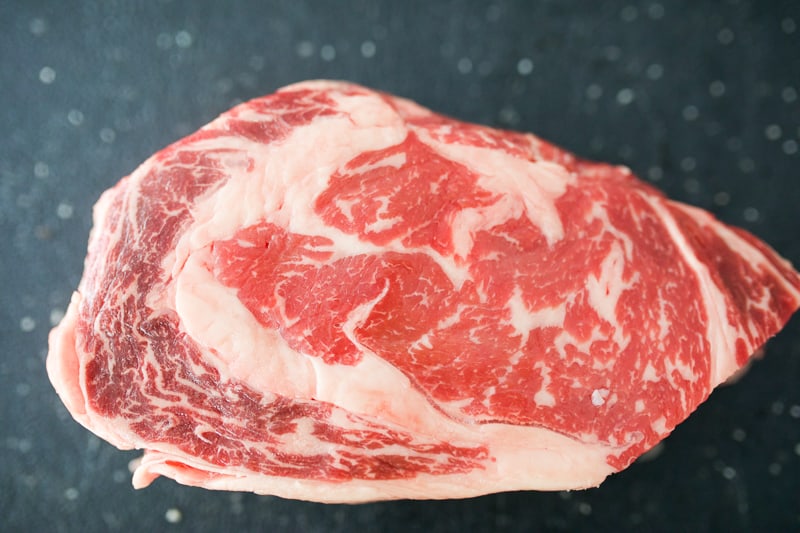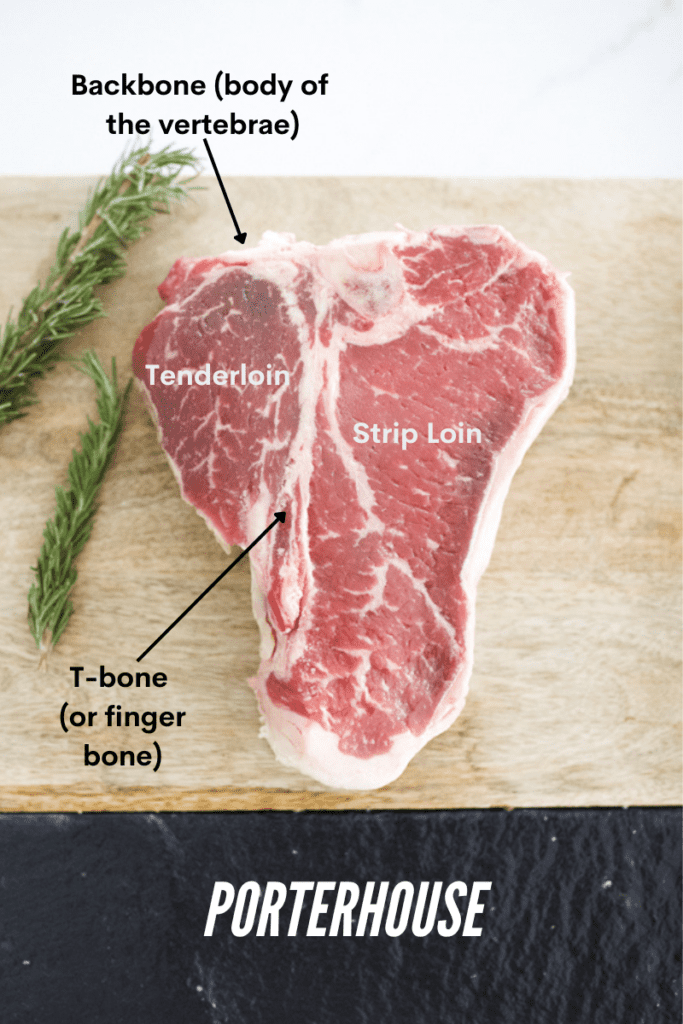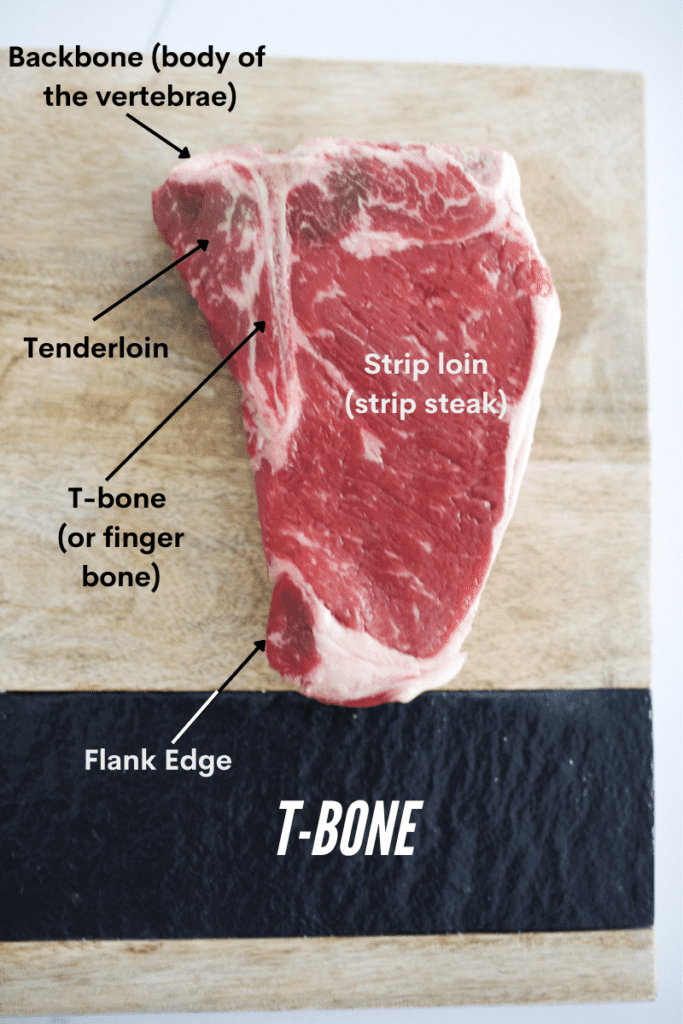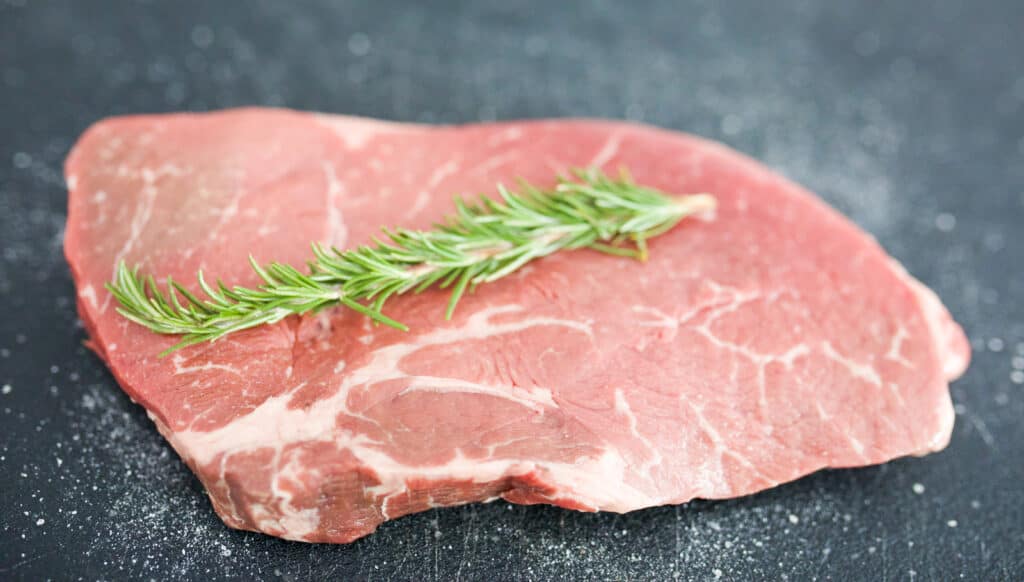What’s the most tender cut of steak on the market? The short and sweet answer is filet mignon. This center cut of tenderloin is the leanest yet most succulent cut of beef. However, such a prime cut comes with a pretty expensive price tag.
Plenty of other tender steaks are available, so you don’t have to spend much to get an exceptionally tender result. Plus, with the right preparation and cooking method, even tougher steaks can become as flavorful and buttery as a higher-end cut.
It all comes down to factors like your preferred doneness, cooking method, and flavor. In this article, we’ll review five cuts of steak that can be just as delicious as a filet mignon when matched to your preferences. We also provide a section dedicated to tips for cooking tender steak.
Table of Contents
5 Most Tender Cuts Of Steak
1. Filet Mignon
Filet Mignon Texture & Flavor
This succulent cut is known for its texture, not its flavor. It has a mild, sweet flavor. It’s a great blank canvas that’s often served with some kind of light and flavorful sauce.
The drawback of Filet is the per-pound cost and the fact that it isn’t as bold or beefy as other steak cuts with more fatty marbling.
The filet mignon is a cross-cut taken from the very center of the beef tenderloin. It’s lean enough that you can feel good about eating this steak cut with frequency.
The tenderloin is the least exercised and therefore most tender steak available. This muscle bears absolutely no weight, and there’s only a small amount of connective tissue. In a filet, there isn’t a build-up of muscle fibers to create a tough or chewy texture.
Filet Mignon Price
The tenderloin makes up only 2-3% of the cow’s body. Therefore, there’s only about 1 lb of filet mignon per cow. This is why the filet mignon is a prime cut with a premium price tag. This steak is typically anywhere between $30-$50 per pound.
How to Cook Filet Mignon
You can cook filet mignon on the grill or in a pan, but only briefly and over high heat. The hands-down best way to prepare a filet mignon is with sous vide. It’s a gentle method that ensures the time and money you’re investing into a pricier steak will have a reliable payoff.
2. Ribeye
Ribeye Texture & Flavor
Ribeye is an ideal cut for folks who shy away from a rare or medium-rare steak. There’s so much fat insulating a ribeye that it can be cooked to medium and still maintain a flavorful and juicy texture.

Ribeye steak comes from the cow’s rib. Like the tenderloin, the rib muscle doesn’t see a lot of action during the cow’s life. Unused muscle results in a tender texture rather than a tough and chewy one.
There’s rich marbling throughout a ribeye which loosens the meat’s grain. A looser grain means less muscle fiber, resulting in a soft buttery texture. For an especially tender steak, try a ribeye cap, which comes the most tender part of the ribeye.
Ribeye is a juicy and delectable cut that’s very rich in flavor. Simplicity is key. You won’t need much more than some salt and pepper to prepare this steak. The cut speaks for itself, so this is a perfect option for a low-prep but high-reward steak.
Bone in ribeye goes by the name tomahawk steak, cowboy ribeye, and rib steak.
Ribeye Price
You’ll find rib eye sold with or without the bone. It’s much more affordable than filet mignon and ranges from $12-$25 per pound.
How to Cook Ribeye
Ribeye is the best grilling steak you could buy. Its marbling allows it to stand up against the intense heat and flames. This cut is also great for skillet cooking, oven baking, and broiling. The marbling keeps the cut juicy through high-heat cooking and more low and slow methods.
If you’ve never tried sous vide Ribeye steak, now is the time. This method will allow you to achieve a medium rare temperature from edge to edge. Sous vide will turn this already tender cut into a mouth-watering fall-apart steak bursting with flavor.
Related reading: New York Strip vs Ribeye – Which to Choose?
3. Porterhouse
With Porterhouse, you actually get two different cuts divided by a section of bone. Filet Mignon on one side and strip steak on the other.

Anatomically speaking, Porterhouse is a thick cut from the short loin of a cow’s back. It’s always served bone-in. This cut features strip steak on one side of the bone and a large tenderloin steak on the other.
Porterhouse and T-bone look similar and feature the same strip steak / tenderloin makeup. However, it’s by far a larger piece of meat. Porterhouse beats out the T-Bone in terms of thickness and length.
Porterhouse Texture & Flavor
Porterhouse also has a larger tenderloin muscle than a T-Bone steak. And the marbling throughout makes for a tasty steak. As long as you match the cooking method to the cut, you can achieve a succulent Porterhouse. And you’ll benefit from much more volume than a T-bone.
Finding this cut of steak at your local grocery store might be challenging. But the tenderness and juicy flavor are worth the extra trip if you can find a reputable butcher.
Porterhouse Price
Typically, a porterhouse will run you $10-$22 per pound, and you’ll have more than enough meat for two servings. You can usually find this steak pre-trimmed for low effort and convenient cooking.
How to Cook Porterhouse
A porterhouse does great on a cast iron skillet since you can achieve the ideal sear while monitoring the temperature.
The trick is to simultaneously cook both the strip steak and tenderloin without overcooking one or the other. The best practice is to sear at a high temperature and then finish cooking away from direct heat.
If you want to get sophisticated about it, remove both pieces from the bone and cook them separately. If you’ve got time to go through that exercise, it’s the best way to have both sections turn out perfectly.
4. T-Bone
Even though the makeup of a T-Bone is similar to a Porterhouse, the way you plan to cook your steak will determine which one is the right choice for you.

T-Bone Texture & Flavor
First off, the tenderloin portion from a Porterhouse is larger but less tender than the one on a T-bone. This is because Porterhouse comes from a portion of the cow closer to the muscled leg area. The T-bone steak is closer to the stomach.
T-bone steak is smaller and leaner than a Porterhouse, but it still packs the same satisfying beefy flavor. It’s not too big, so if you want two separate steaks to cook to each diner’s preference, pick this cut over a shared Porterhouse.
You can read about what exactly differentiates a Porterhouse vs T Bone here.
T-Bone Price
Usually, this cut of steak is $13-$22 per pound. It’s much easier to find than a Porterhouse cut.
How to Cook T-Bone
To make your T-bone as tender as possible, consider your marinade, cooking method, and desired doneness. The goal is to soften the strip steak to match the tenderness of the tenderloin.
Choose a T-bone if you’re looking for a flavorful cut that pairs well with your favorite Teriyaki marinade. Then, you can grill it, toss it in the cast-iron skillet, or broil it to a tender medium rare.
5. Top Sirloin
Top Sirloin Texture & Flavor
Top sirloin is the most popular cut on this list. Not to be confused with bottom sirloin, this cut is more lean and flavorful. It’s budget-friendly, versatile, and also the most tender cut of all the sirloin varieties.
The leanness of the top sirloin gives the meat a firmer chew. However, that doesn’t necessarily mean toughness. If you don’t enjoy the texture of a fatty, highly-marbled steak, then you’ll enjoy the consistency of this cut.

Top Sirloin Price
Top sirloin has amazing melt-in-your-mouth qualities at the most affordable price. Typically, this cut will cost you between $8-$12 per pound.
How to Cook Top Sirloin Steaks
Not only is top sirloin affordable, but it also works well in several culinary contexts. Of course, you can use them as steaks. But they’re also delicious in stir-fries, fajitas, or kabobs.
Since this is a leaner cut than most, take advantage of all the tenderizing methods you have at your disposal. Consider purchasing an aged top sirloin for more tenderness. Marinate the meat, cook it to medium rare, and make sure that when you slice it that you do so against the grain.
Tips For Cooking Tender Steak
1. Use high-quality beef.
Don’t waste your money on a low-quality cut of filet mignon. Chances are that it will be tougher than a high-quality flank steak. Source your meat from a reputable source.
2. Pair your cooking method with the cut.
Even the tougher cuts of beef can become melt-in-your-mouth delicious with the right cooking method. For example, don’t grill a knuckle tip sirloin, or it’ll be like biting into jerky. Instead, match the cooking method to the cut and braise it until it just about falls apart in your mouth.
3. Don’t overcook it.
The tougher the cut, the closer to rare you should cook it. Medium rare is almost always the ideal steak temperature. But you could get away with cooking a tough skirt steak rare, and it’ll taste just as tender as higher-price cuts.
4. Always marinate tougher cuts.
When preparing inherently tender steaks like filet mignon or prime rib, a little salt and pepper for seasoning are all you need. But when skirt steak is on the menu, you can achieve a similar tenderness through marination. Include acidic tenderizing ingredients in your marinade to break down the tough muscle protein in your steak. Try adding wine, vinegar, citrus juice, coarse salt, or ginger to your next marinade, and you’ll notice the difference.
5. Slice the steak against the grain.
Look at your raw cut of steak, and you’ll notice the muscle fibers all run the same way along the meat. First, cook and rest the steak. Then, slice crosswise through the fibers. By cutting against the grain, you’ve shortened the muscle fibers and made each bite of steak more tender and easier to chew.
6. Use a sous vide.
One of the lesser-known benefits of a sous vide is its ability to tenderize meat, yet maintain steak consistency (unlike braising), like no other method of cooking. One of the more popular cuts of steak to sous vide is chuck eye aka poor man’s ribeye, along with chuck roast.
The chuck eye has many of the properties of ribeye, and in fact is from an adjacent part of the cow that extends into the shoulder. What makes the chuck eye so popular to sous vide is that it costs half the price of ribeye, but with sous vide, a finished chuck eye vs ribeye is basically indistinguishable.
What is the most tender cut of steak?
By definition, filet mignon is the most tender cut of steak. It’s lean, but it still has a succulent, melt-in-your-mouth texture that’s always soft and never chewy.
However, plenty of other cuts are more affordable and, when prepared the right way, can taste just as succulent as the filet mignon.
I recommend a ribeye cut, either bone-in or out depending on your preference. It has much more marbling and beefy flavor than the pricier filet mignon.
Plus, ribeye is versatile enough for a variety of cooking methods. It’s the perfect steak to experiment with grilling, skillet cooking, oven baking, broiling, and of course, sous vide.
FAQs: Flavorful & Tender Cut of Steaks
Ribeye is the ultimate tender steak to grill. You can purchase this cut with or without the bone. It has more marbling than a filet mignon, so it holds up on a high-heat grill better than the succulent yet delicate filet. Plus, it needs minimal seasoning or marinade because of its bold, beefy flavor.
In our opinion, the cheapest most tender steak is the Chuck Eye Steak. You might find it labeled as Boneless Chuck Filet, Delmonico Steak, or English Steak. It’s well-marbled, tender, and savory, like a ribeye. However, it’s a fraction of the cost of both ribeye and filet mignon.
A ribeye is more tender than a sirloin. This is confirmed by the National Beef Tenderness Survey conducted at Texas A&M.

